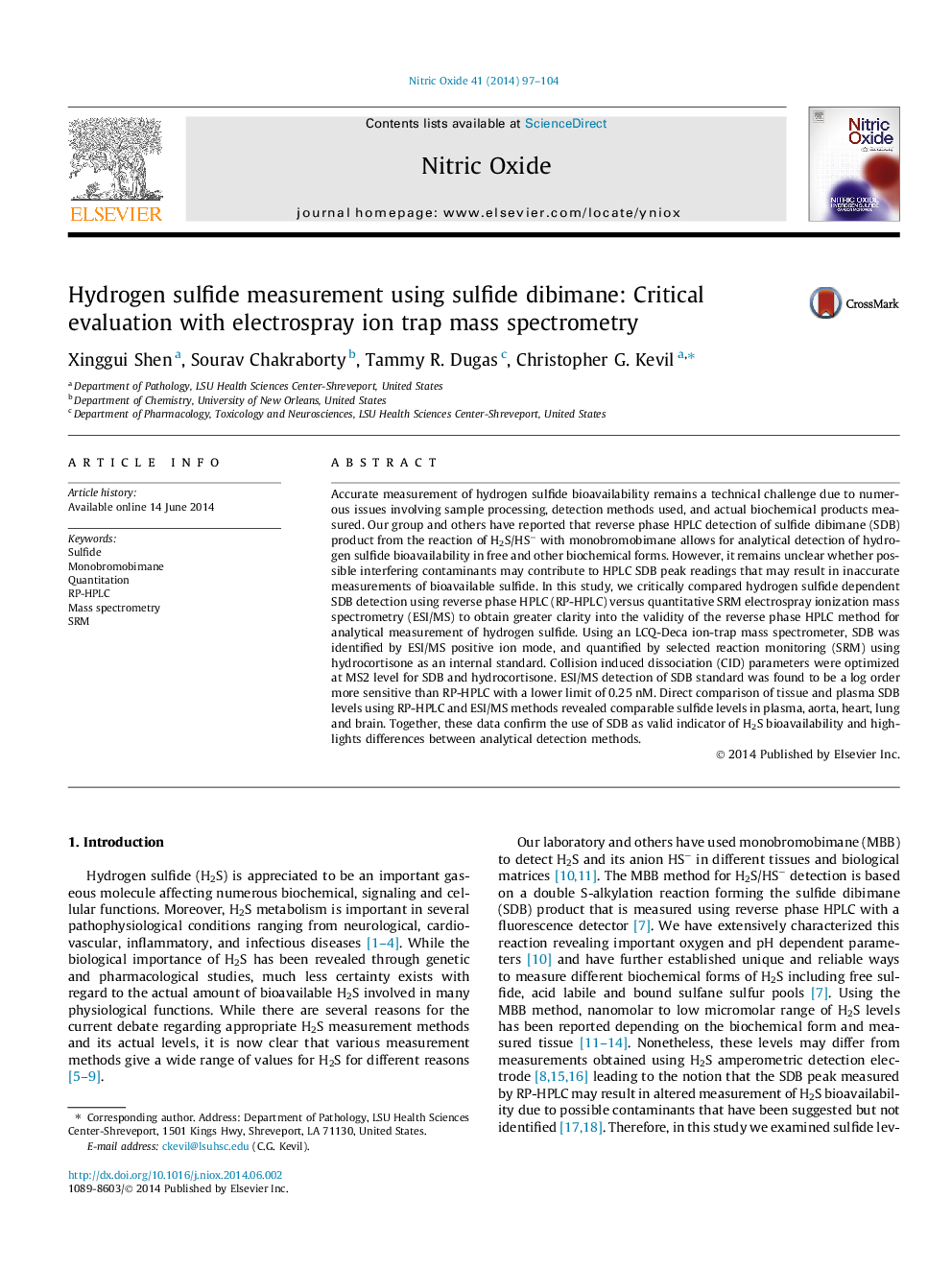| Article ID | Journal | Published Year | Pages | File Type |
|---|---|---|---|---|
| 2000681 | Nitric Oxide | 2014 | 8 Pages |
•Mass spectrometry analysis confirms SDB production from MBB-sulfide reaction.•Mass spectrometry analysis validates HPLC fluorescence detection of SDB.•Mass spectrometry analysis of SDB is useful in measuring low amounts of sulfide.•Physiological free sulfide levels are very low.
Accurate measurement of hydrogen sulfide bioavailability remains a technical challenge due to numerous issues involving sample processing, detection methods used, and actual biochemical products measured. Our group and others have reported that reverse phase HPLC detection of sulfide dibimane (SDB) product from the reaction of H2S/HS− with monobromobimane allows for analytical detection of hydrogen sulfide bioavailability in free and other biochemical forms. However, it remains unclear whether possible interfering contaminants may contribute to HPLC SDB peak readings that may result in inaccurate measurements of bioavailable sulfide. In this study, we critically compared hydrogen sulfide dependent SDB detection using reverse phase HPLC (RP-HPLC) versus quantitative SRM electrospray ionization mass spectrometry (ESI/MS) to obtain greater clarity into the validity of the reverse phase HPLC method for analytical measurement of hydrogen sulfide. Using an LCQ-Deca ion-trap mass spectrometer, SDB was identified by ESI/MS positive ion mode, and quantified by selected reaction monitoring (SRM) using hydrocortisone as an internal standard. Collision induced dissociation (CID) parameters were optimized at MS2 level for SDB and hydrocortisone. ESI/MS detection of SDB standard was found to be a log order more sensitive than RP-HPLC with a lower limit of 0.25 nM. Direct comparison of tissue and plasma SDB levels using RP-HPLC and ESI/MS methods revealed comparable sulfide levels in plasma, aorta, heart, lung and brain. Together, these data confirm the use of SDB as valid indicator of H2S bioavailability and highlights differences between analytical detection methods.
